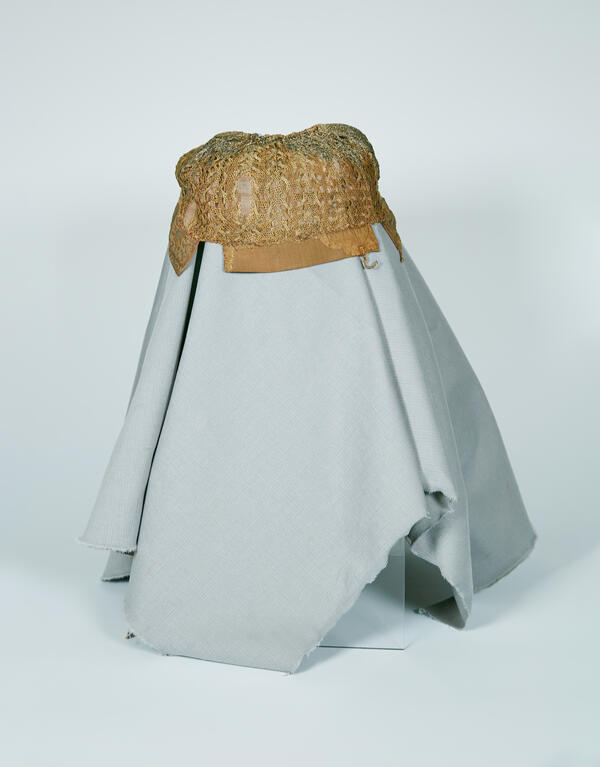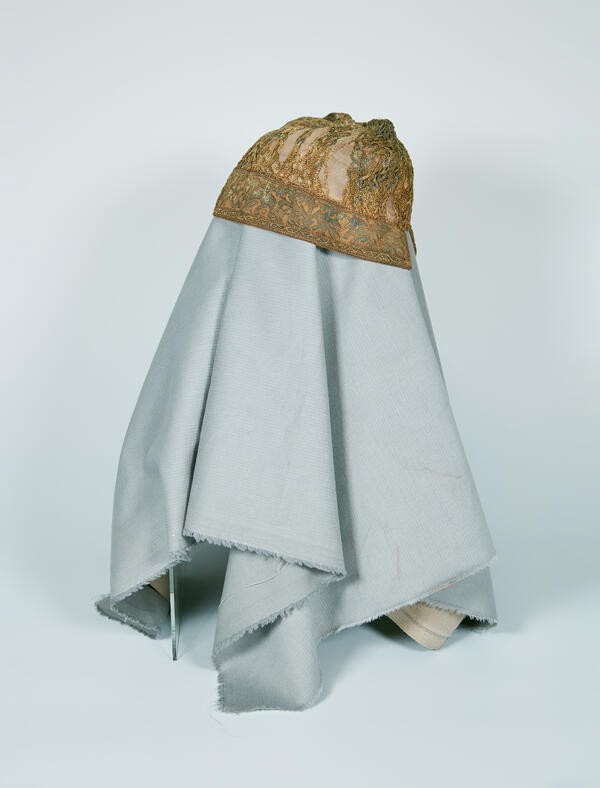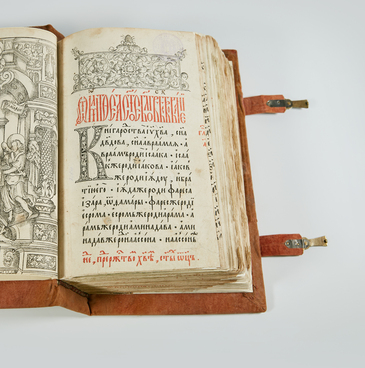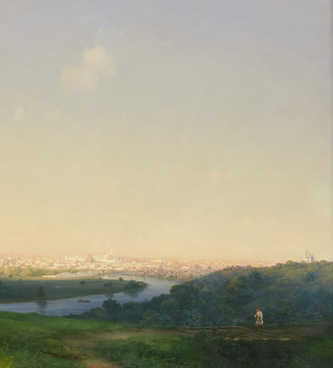The Museum of Moscow houses a volosnik that was discovered in an inscribed sarcophagus unearthed in Bolshoy Znamensky Lane during excavations in the fall of 1948. The sarcophagus belonged to Maria Mutyanskaya, the wife of Radu, a prince of Wallachia (Moldavia), who served the Russian tsars. The woman was buried in 1603.
The woman’s noble origin is indicated not only by the expensive silk fabric embroidered with golden threads but also by the pattern on the headband. In the center, there is the world tree, a symbol of the universe that refers to its vertical axis stretching from the underworld, realm of the dead, to the kingdom of heaven. There are unicorns on both sides of the tree. A traditional symbol of purity, chastity, loyalty, and prudence, a unicorn also symbolized solitude and monastic life. The inscription on Maria’s sarcophagus says that she took her monastic vows under the name Alexandra. Some researchers believe that the images of unicorns on her headdress also refer to her status as a nun.
A volosnik was an obligatory part of the headdress of a married Russian woman. According to old Russian traditions, women were expected to wear a headdress and cover their hair. This was done to avoid sins and to be protected from the evil eye. The Russian verb meaning “to embarrass oneself” is appropriately translated as “to show uncovered hair”. A headscarf or a hat was worn outside. Indoors, a woman could use a volosnik, a small tight-fitting cap worn over the thinnest headscarf.
A volosnik was a cap, consisting of a silk headband and an openwork or a net-like upper part. This tightly fitting headdress was tied up with a cord in the back and used to cover the hair. The headband was usually made of red silk embroidered with golden threads. Not many of these headdresses have survived to this day — there are only about thirty volosniks known. They are so rare because the delicate fabric is very poorly preserved underground, and a drastic change in humidity results in the quick deterioration of gold threads.




